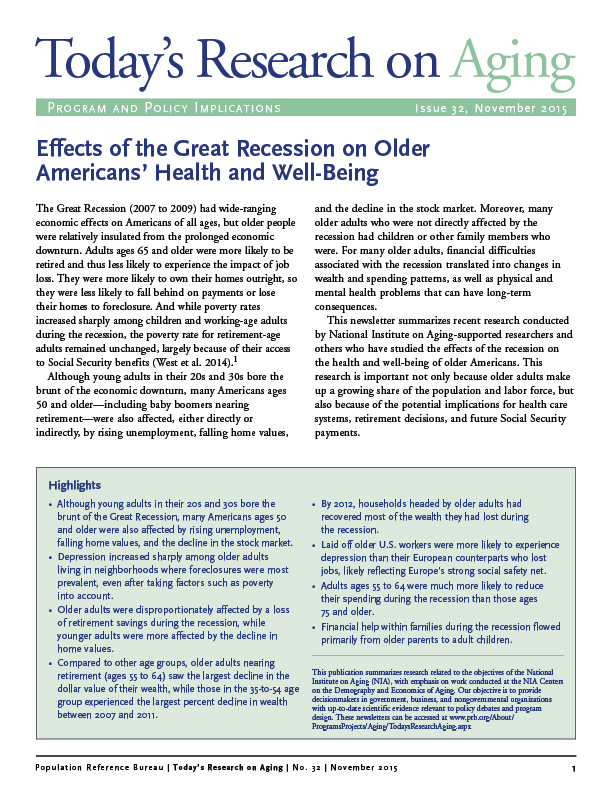Project: Demography and Economics of Aging and Alzheimer’s Disease
Effects of the Great Recession on Older Americans’ Health and Well-Being
This report summarizes recent research conducted by National Institute on Aging-supported researchers and others who have studied the effects of the recession on the health and well-being of older Americans.



